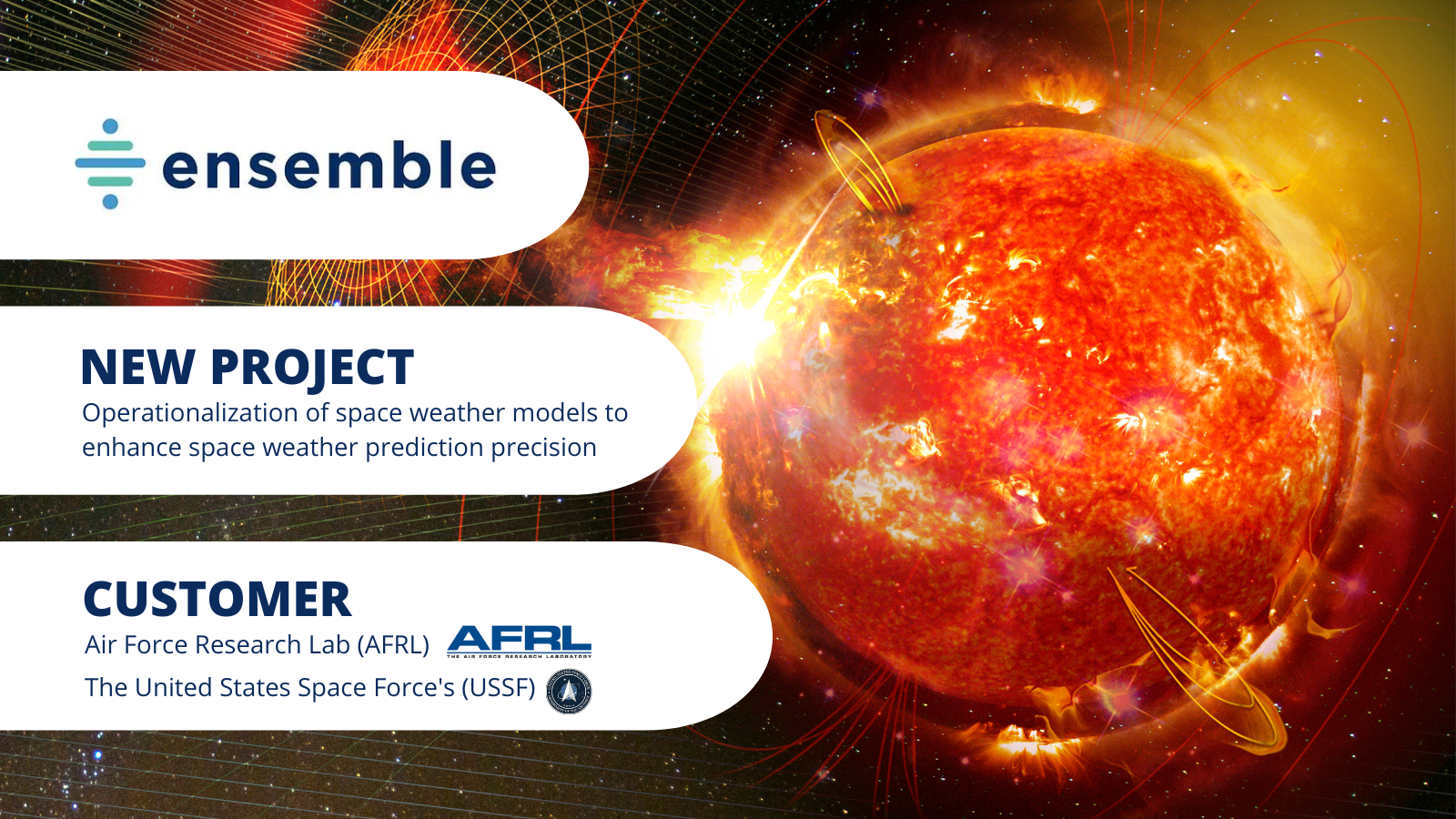We are excited to announce our new Small Business Innovation Research (SBIR) Direct to Phase II contract with the Air Force Research Lab (AFRL) in partnership with The United States Space Force (USSF), aimed at further enhancing the precision of space weather prediction.
Solar Particle Events (SPEs) constitute a significant threat within the domains of the United States Space Force (USSF). In the context of the USSF, cislunar space refers to the region of space between the Earth and the Moon. This area has become of increasing importance due to the USSF’s expanded mission to defend and protect U.S. interests beyond geostationary orbits, extending up to 272,000 miles and beyond. These events can impact life safety and mission success, necessitating urgent attention. This expansion presents a significant challenge in terms of Space Domain Awareness (SDA) surveillance, requiring the USSF to monitor and protect national security assets in critical cislunar and extended geostationary (X-GEO) space.
Ensemble’s innovative solution involves the operationalization of space weather models, resulting in a real-time nowcasting pipeline and Amazon Web Services (AWS) cloud infrastructure that delivers crucial space weather data. This advancement is particularly pertinent to the Artemis and Moon to Mars programs, where 24/7 mission support is essential. Through a proprietary Atmospheric Density Application Program Interface (API), Ensemble extends its capabilities to monitor and forecast SPEs in the cislunar and X-GEO domains. By leveraging the open-source Python toolkit Kamodo, Ensemble will synthesize particle models and extrapolate SPE predictions, ensuring accurate forecasts across the expansive space environment. This approach stands out for its utilization of magnetospheric simulations to estimate potential event origins beyond geosynchronous orbits. Ensemble’s ensemble model, a culmination of top-performing Solar Energetic Particle (SEP) models, is being develop to fully integrate into a cloud deployment architecture for continuous forecasting information, accessible through API and dashboard interfaces.
Safeguarding Space Missions and National Security
The United States Space Force’s (USSF) mission scope has expanded significantly, encompassing cislunar space and beyond. This extension poses new challenges, particularly in Space Domain Awareness (SDA) surveillance. With expertise in space physics, Ensemble is uniquely poised to bridge the gap in space weather forecasting. The imminent solar maximum in 2025 and the increasing vulnerability of space-based infrastructure accentuate the importance of accurate space weather predictions. Ensemble’s solution not only addresses an immediate concern but also aligns perfectly with the broader mission of the USSF – defending U.S. interests in the ever-expanding frontier of space.
About the SBIR/STTR Program
The Small Business Innovation Research (SBIR) and Small Business Technology Transfer (STTR) programs are highly competitive programs that encourage domestic small businesses to engage in Federal Research/Research and Development (R/R&D) with the potential for commercialization. Through a competitive awards-based program, SBIR and STTR enable small businesses to explore their technological potential and provide the incentive to profit from its commercialization. By including qualified small businesses in the nation’s R&D arena, high-tech innovation is stimulated, and the United States gains entrepreneurial spirit as it meets its specific research and development needs.
Central to the STTR program is the partnership between small businesses and nonprofit research institutions. The STTR program requires the small business to formally collaborate with a research institution in Phase I and Phase II. STTR’s most important role is to bridge the gap between performance of basic science and commercialization of resulting innovations.
The mission of the SBIR/STTR programs is to support scientific excellence and technological innovation through the investment of Federal research funds in critical American priorities to build a strong national economy.
The program’s goals are to:
- Stimulate technological innovation.
- Meet Federal research and development needs.
- Foster and encourage participation in innovation and entrepreneurship by women and socially or economically disadvantaged persons.
- Increase private-sector commercialization of innovations derived from Federal research and development funding.







